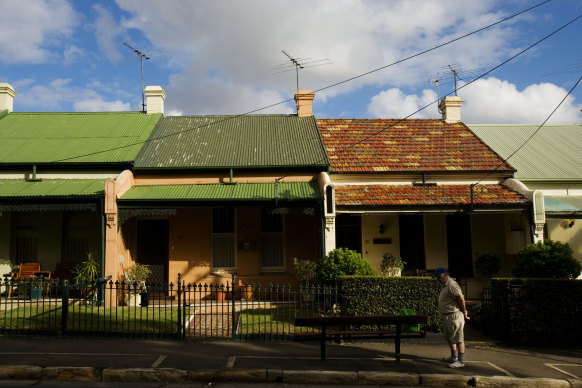Opinion
Why the Coalition’s super-for-housing plan is better than it looks
Noel Whittaker
Money columnistHousing affordability is shaping as a major topic as we head toward the next federal election. The numbers are staggering. Ten years ago, the median house price in Sydney was $880,000, and in Melbourne it was $630,000. Today, those figures are $1.7 million and $1.2 million respectively. This equates to an annual increase of 7.93 per cent for Sydney and 6.8 per cent for Melbourne.
Meanwhile, wages have not kept pace. Over the past decade, gross income growth has averaged just 2.18 per cent per year for Sydney and 2.03 per cent for Melbourne. This disparity is continuously widening the gap between the haves and the have-nots.

As houses become increasingly unaffordable, using superannuation in a sensible way is an appealing option.Credit: Nic Walker
The solution is complex as numerous factors are contributing to the problem. Some of the key factors are a migration surge that put pressure on rental accommodation, a growing shortage of skilled labour and materials and militant unions forcing up costs.
Yet another hurdle is mortgage insurance, which is required for buyers with less than a 20 per cent deposit. For example, analysis from Mozo shows that if you bought an $850,000 property with a 5 per cent deposit of $42,500, the lender’s mortgage insurance fee would be almost $38,000 – nearly as much as your deposit.
I have been against previous suggestions to draw on super because of the long-term effect on people’s balances, but this scheme has a way to deal with that.
To make matters worse, mortgage insurance is not transferable from one lender to another, even though there are only a few providers in the country. This makes it virtually impossible for anyone with less than 20 per cent equity to refinance their property with a different lender on better terms because they would need to pay for mortgage insurance again.
The Coalition proposes a unique scheme that allows homebuyers to invest up to $50,000 or 40 per cent of their superannuation (whichever is less) toward the purchase of a new or established home.
I have been dead against previous suggestions to draw on super because of the long-term detrimental effect on people’s balances, but this scheme has a way to deal with that. Participants are required to refund the withdrawn amount, along with any earnings, when the house is sold. The “interest” rate used to calculate the earnings will be tied to the capital growth of the home.
This scheme will also be available to people who separate later in life, especially to assist women into homeownership, noting the current income and employment gaps compared to men.
Participants must live in the property as owner-occupiers for at least 12 months and provide a minimum deposit of 5 per cent of the purchase price, excluding the amount withdrawn from their superannuation. Upon selling the property, they must repay the withdrawn funds along with any proportional gains or losses.
Think about Kerry and Sam, both aged 35, who each have $84,000 in superannuation. Through diligent saving, they have scraped together a deposit of $85,000. But if they buy now, they’ll be liable for nearly $21,000 in mortgage insurance, which will be added to their loan and remain a burden for the life of the loan.
However, if they chose to withdraw $36,000 each from their superannuation under the proposed Super Home Buyer Scheme, the mortgage insurance would drop to just $6700.
If they focused on paying off the mortgage quickly, in a few years they may be able to get the loan to valuation ratio below 80 per cent, and then be free to refinance at a cheaper interest rate. The ability to access their superannuation has saved them more than $14,000, which is a massive return on the $72,000 they have borrowed from their super.
This case study shows the benefit of the superannuation access scheme. Using super funds reduces the loan size, improving loan-to-valuation ratios, and potentially improving eligibility, especially if income is limited. And a smaller loan can be paid off faster using simple techniques such as fortnightly repayments.
If the property appreciates by 3 per cent annually, and they sell in five years, the $36,000 each has borrowed from their super must be repaid, plus a 3 per cent notional interest matching the capital gain.
This strategy helps build financial security by reducing loan interest and increasing property equity through capital growth. The Coalition needs to add just one feature: make mortgage insurance transferable between lenders. This would be a game-changer.
Noel Whittaker is the author of Retirement Made Simple and other books on personal finance. noel@noelwhittaker.com.au
- Advice given in this article is general in nature and is not intended to influence readers’ decisions about investing or financial products. They should always seek their own professional advice that takes into account their own personal circumstances before making any financial decisions.
Expert tips on how to save, invest and make the most of your money delivered to your inbox every Sunday. Sign up for our Real Money newsletter.